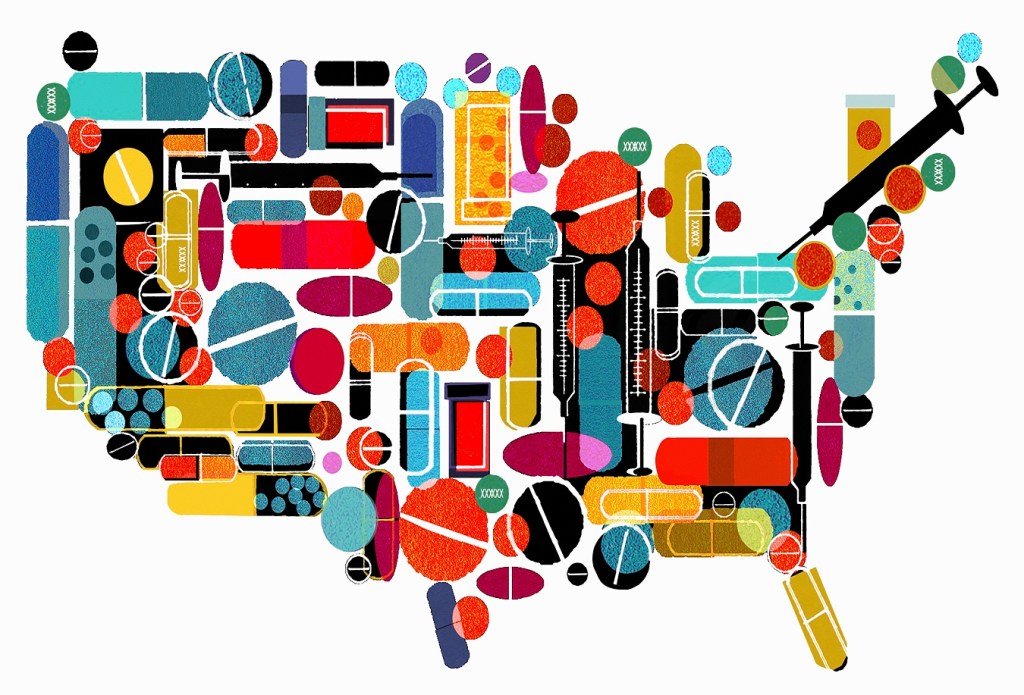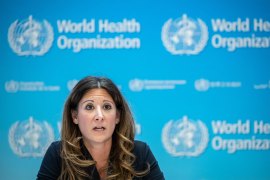Researchers sketched a vivid line Friday linking the dollars spent by drugmakers to woo doctors around the country to a vast opioid epidemic that has led to tens of thousands of deaths.
The study, published in JAMA Network Open, looked at county-specific federal data and found that the more opioid-related marketing dollars were spent in a county, the higher the rates of doctors who prescribed those drugs and, ultimately, the more overdose deaths occurred in that county.
For each three additional payments made to physicians per 100,000 people in a county, opioid overdose deaths were up 18 percent, according to the study. The researchers said their findings suggest that “amid a national opioid overdose crisis, reexamining the influence of the pharmaceutical industry may be warranted.”
And the researchers noted that marketing could be subtle or low-key. The most common type: meals provided to doctors.
Dr. Scott Hadland, the study’s lead author and an addiction specialist at Boston Medical Center’s Grayken Center for Addiction, has conducted previous studies connecting opioid marketing and opioid prescribing habits.
“To our knowledge, this is the first study to link opioid marketing to a potential increase in prescription opioid overdose deaths, and how this looks different across counties and areas of the country,” said Hadland, who is also a pediatrician.
Nearly 48,000 people died of opioid overdoses in 2017, about 68 percent of the total overdose deaths, according to the Centers for Disease Control and Prevention. Since 2000, the rate of fatal overdoses involving opioids has increased 200 percent. The study notes that opioid prescribing has declined since 2010, but it is still three times higher than in 1999.
The researchers linked three data sets: the Centers for Medicare & Medicaid Services Open Payments database that shows drugmakers’ payments to doctors; a database from the CDC that shows opioid prescribing rates; and another CDC set that provides mortality numbers from opioid overdoses.
They found that drugmakers spent nearly $40 million from Aug. 1, 2013, until the end of 2015 on marketing to 67,500 doctors across the country.
Opioid marketing to doctors can take various forms, although the study found that the widespread practice of providing meals for physicians might have the greatest influence. According to Hadland, prior research shows that meals make up nine of the 10 opioid-related marketing payments to doctors in the study.
“When you have one extra meal here or there, it doesn’t seem like a lot,” he said. “But when you apply this to all the doctors in this country, that could add up to more people being prescribed opioids, and ultimately more people dying.”
Dr. Andrew Kolodny, co-director of opioid policy research at Brandeis University’s Heller School for Social Policy and Management, said these meals may happen at conferences or industry-sponsored symposiums.
“There are also doctors who take money to do little small-dinner talks, which are in theory, supposed to educate colleagues about medications over dinner,” said Kolodny, who was not involved in the study. “In reality this means doctors are getting paid to show up at a fancy dinner with their wives or husbands, and it’s a way to incentivize prescribing.”
And those meals may add up.
“Counties where doctors receive more low-value payments is where you see the greatest increases in overdose rates,” said Magdalena Cerdá, a study co-author and director of the Center for Opioid Epidemiology and Policy at the New York University School of Medicine. The amount of the payments “doesn’t seem to matter so much,” she said, “but rather the opioid manufacturer’s frequent interactions with physicians.”
Dr. G. Caleb Alexander, who is the co-director of the Johns Hopkins Center for Drug Safety and Effectiveness and was not affiliated with the study, said that the findings about the influence of meals aligns with social science research.
“Studies have found that it may not be the value of the promotional expenditures that matters, but rather that they took place at all,” he said. “Another way to put it, is giving someone a pen and pad of paper may be as effective as paying for dinner at a steakhouse.”
The study says lawmakers should consider limits on drugmakers’ marketing “as part of a robust, evidence-based response to the opioid overdose epidemic.” But they also point out that efforts to put a high-dollar cap on marketing might not be effective since meals are relatively cheap.
In 2018, the New Jersey attorney general implemented a rule limiting contracts and payments between physicians and pharmaceutical companies to $10,000 per year.
The California Senate also passed similar legislation in 2017, but the bill was eventually stripped of the health care language.
The extent to which opioid marketing by pharmaceutical companies fueled the national opioid epidemic is at the center of more than 1,500 civil lawsuits around the country. The cases have mostly been brought by local and state governments. U.S. District Judge Dan Polster, who is overseeing hundreds of the cases, has scheduled the first trials for March.
In 2018, Kaiser Health News published a cache of Purdue Pharma’s marketing documents that displayed how the company marketed OxyContin to doctors beginning in 1995. Purdue Pharma announced it would stop marketing OxyContin last February.
Priscilla VanderVeer, a spokeswoman for the Pharmaceutical Research and Manufacturers of America, or PhRMA, said that doctors treating patients with opioids need education about benefits and risks. She added that it is “critically important that health care providers have the appropriate training to offer safer and more effective pain management.”
Cerdá said it is also important to consider that the study is not saying doctors change their prescribing practices intentionally.
“Our results suggest that this finding is subtle, and might not be recognizable to doctors that they’re actually changing their behavior,” said Cerdá. “It could be more of a subconscious thing after increased exposure to opioid marketing.”







